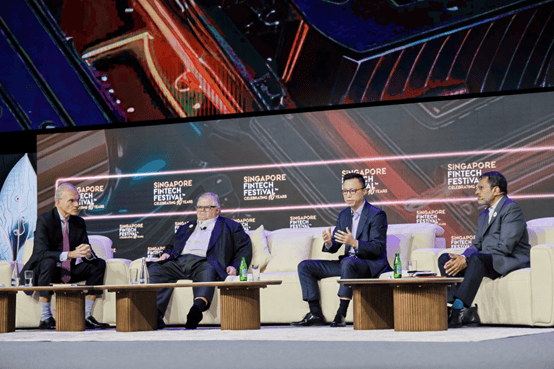
In 2008, a storm hit global finance that left millions jobless, homes foreclosed, and long-trusted institutions like Lehman Brothers wiped from existence. At the core of that tragedy was a brutal truth: banks didn’t truly understand their own risk exposure. Despite decades of data and evolving financial instruments, institutions struggled to measure credit and operational risk with enough precision for timely action. They lacked the internal models and technological backbone to do so.
Today, even with increased scrutiny and evolving regulations, the challenges haven’t disappeared; they have only grown more complex. Global banks now handle trillions of dollars in customer assets and process billions of transactions monthly. The stakes are higher, the systems more intricate, and the expectations from regulators stricter than ever. Global leading banks, serving millions of customers across continents, face the critical need to forecast and prepare for credit and liquidity risks precisely. This is not just a regulatory requirement but a matter of survival.
While major transformations were occurring in the banking scenario. Devendra Singh Parmar entered the picture to play a significant part in this initiative. As Vice President and Program Manager (Group Risk Analytics and Digital Transformation) in one of the world's largest banking and financial services organisations, he excelled with his profound expertise in digital transformation. Over a decade, Mr. Parmar led the charge on a global Risk Analytics Transformation initiative that helped fortify the bank’s risk infrastructure. It also helped ensure compliance with international Basel 3 regulations while building the foundation for predictive, AI-driven banking.
The transformation was driven by the development of over 100 advanced machine learning and large language models for the Probability of Default, Exposure at Default, and Loss Given Default. These models are essential for calculating a bank's risk exposure and required liquidity reserves. These models enabled his organization to assess its Risk-Weighted Assets (RWA) with surgical precision.
Devendra's leadership ensured the bank maintained optimal liquidity levels. This helped shield the bank from global financial crises. His work helped the bank remain agile, prepared, and safe. Above all, he ensured the bank remained resilient even during turbulent market periods. But his contributions didn’t end there.
Devendra also spearheaded the development of enterprise-level systems to combat financial crime. These tools enabled the bank to monitor and flag suspicious transactions. They screened over $1.35 trillion in monthly transactions, protecting $3 trillion in customer assets. The bank consolidated customer and transaction data from its global operations. This unified system enabled the bank to detect and act on money laundering and terrorist financing patterns with unmatched speed and accuracy.
The scope of his work touched nearly every corner of compliance and risk operations. Devendra's systems made complex regulatory obligations executable and repeatable across borders. They achieved this through features like enhanced customer due diligence, real-time screening, behavior-based monitoring, case management, and relationship termination workflows.
Quite serious consequences would have followed had this transformation not happened. Incorrect risk assessments could lead the bank to be under-prepared for potential insolvency. They could also be over-prepared, leading to unnecessary reserves and a loss of money in today's competitive banking environment. Not detecting unauthorized financial activities in real-time could lead to regulatory penalties. It could also result in reputational damage and operational bans from key markets.
His contributions create regulatory-compliant systems. His work also alleviates financial crime and anticipates downturns. Financial institutions face pressure to maintain resilience in turbulent economic conditions, technological disruptions, and regulatory requirements. Setting up frameworks becomes relevant as a result. His systems thus mark a turning point for the transition of banks in operating from compliance to risk-governance approach, thereby creating a global precedent. These technologies embed intelligence, scalability, and flexibility. This allows banks to be prepared for volatility, protect public confidence, and embrace speed to market.
His work did not go unnoticed. Besides other internal praises, he was invited to the Promotion Panel of HSBC, an elite committee of cross-functional leaders that reviews and recommends high-caliber talent. His responsibilities included company-wide nominations and final interviews. He made critical decision recommendations for promotions, which earned him trust and respect within the organization.
Introspecting about his career, Devendra shared “I have always believed that data, when harnessed ethically and intelligently, can be a powerful ally in safeguarding that trust. My goal has always been to ensure systems are built not just to comply with today’s rules, but to adapt and thrive in tomorrow’s challenges.”
As financial establishments face pressures from market volatility, cyber threats, and changing criminal tactics. They must go beyond simple compliance to adapt to these challenges. Future-proofing technologies require investment in resilient systems, frameworks anticipating disruption, and models that address both crises and prevention. As soon as digital transformation and data-driven governance become the norm in global banking. This will lead to a new era of banking stability, where adaptability, intelligence, and trust in business continuity will be the driving forces.
About the Author:
Michael Cain is a NewsBreak contributor and an Editor at Springer Nature, focusing on tech-driven narratives and financial reporting. With a background spanning artificial intelligence, cloud computing, and emerging fintech innovations, Michael has authored pieces like “AI-Powered Merchant Risk Assessment” and “Breaking New Ground in Data Security,” spotlighting cutting-edge solutions that shape modern businesses. Equally at home analyzing corporate earnings or exploring advanced technology trends, Michael aims to bridge the gap between complex concepts and everyday impact.
Connect with him at [email protected] for insights into the evolving frontiers of tech, finance, and beyond.


